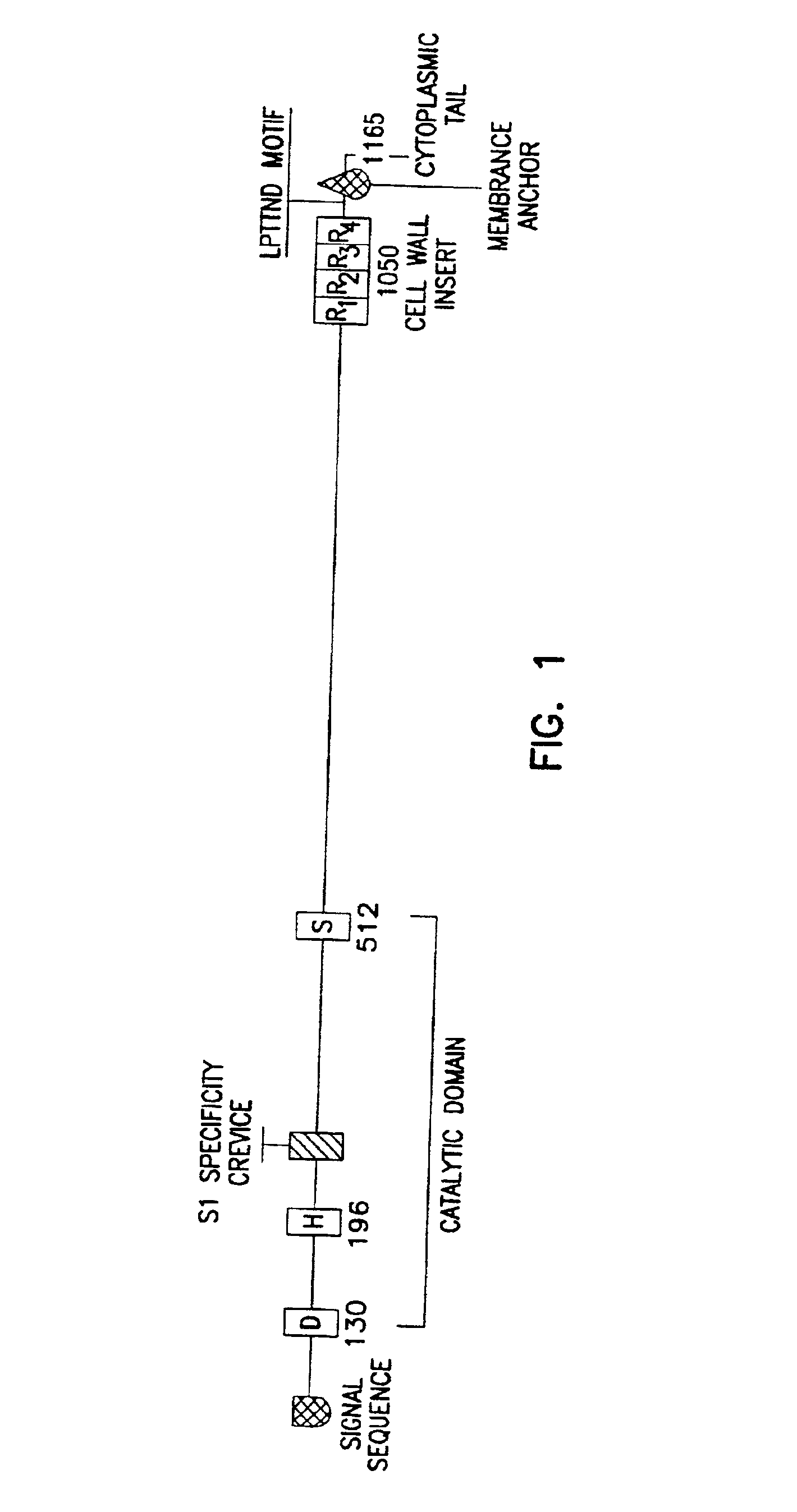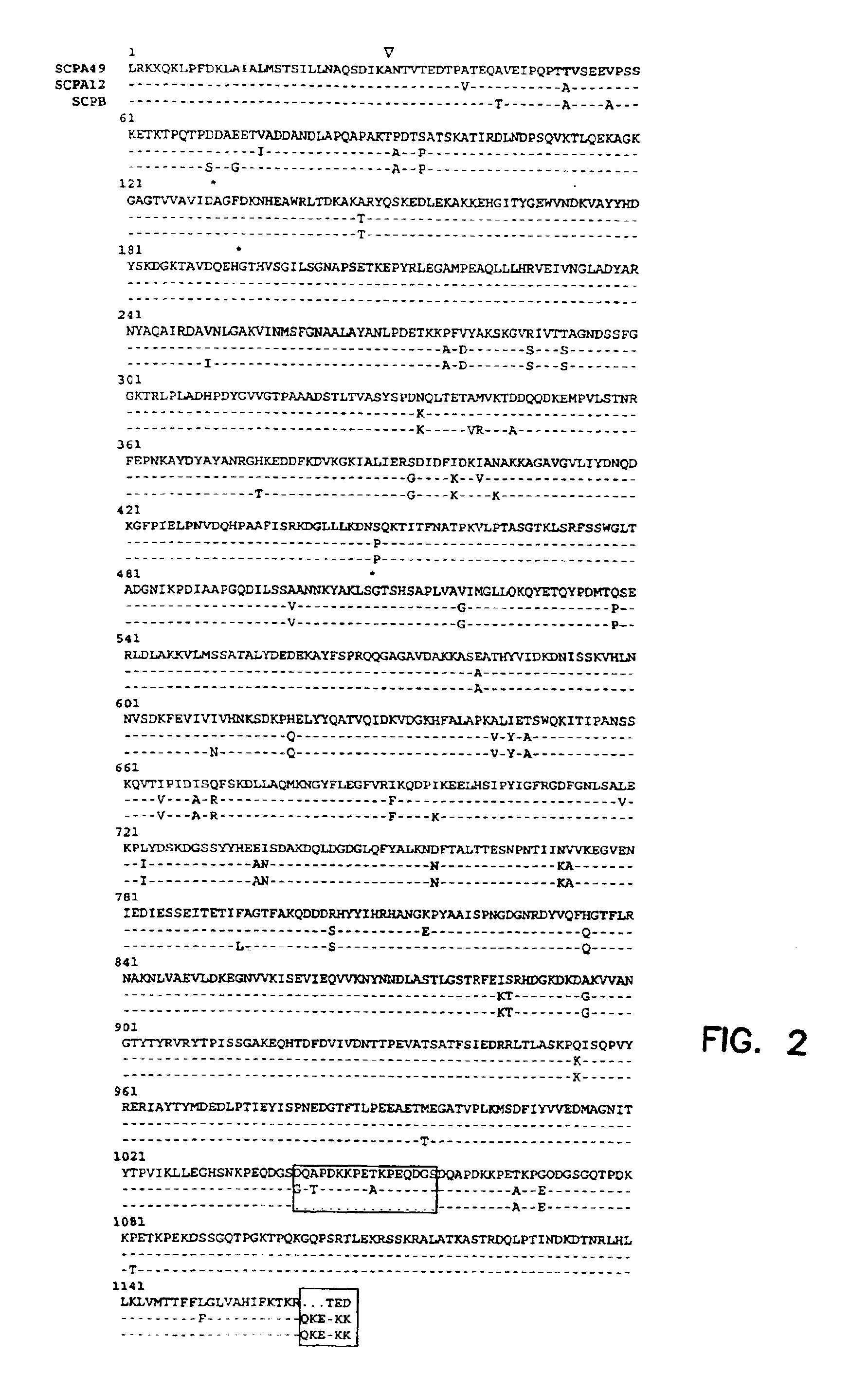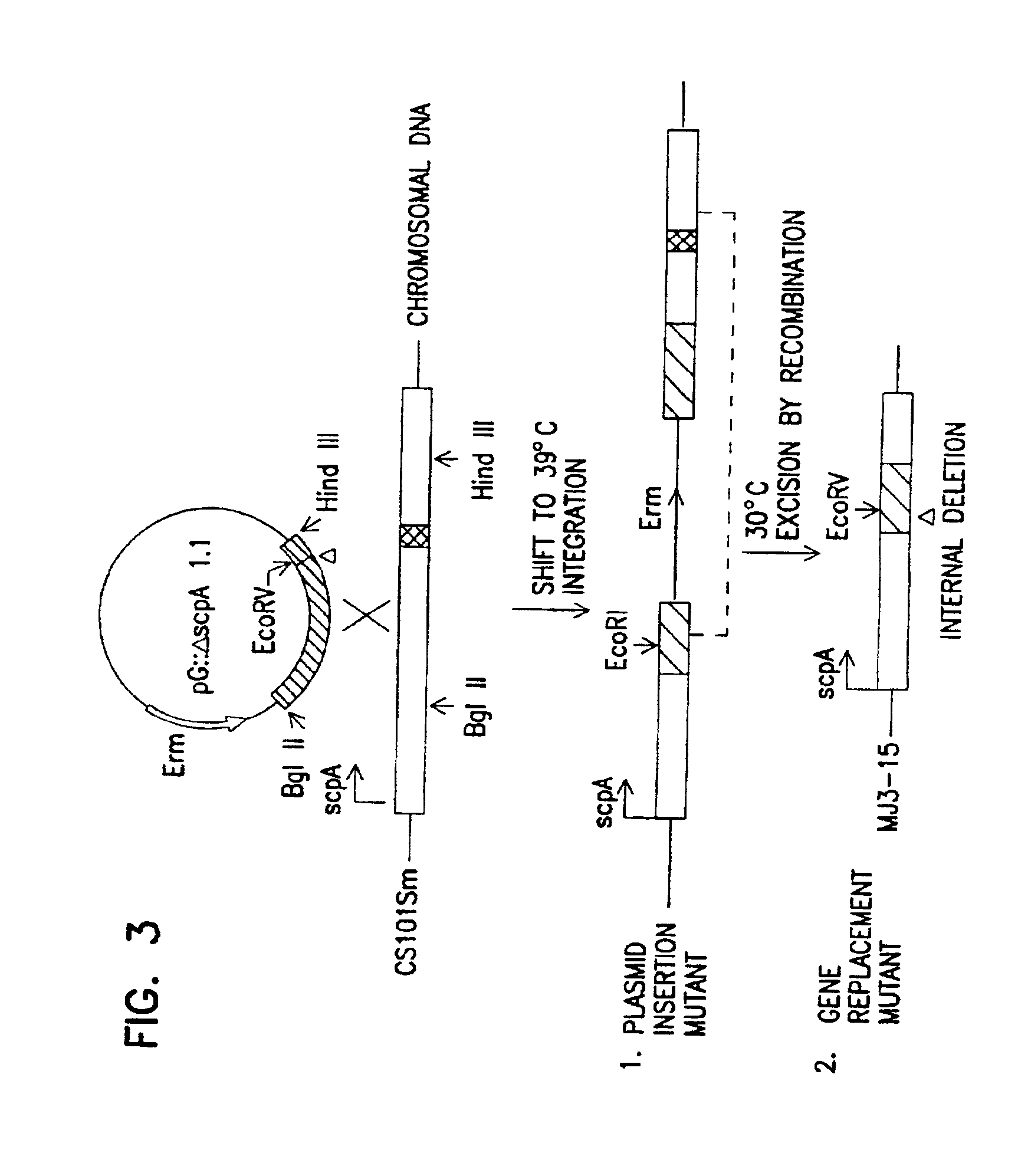Streptococcal C5a peptidase vaccine
a peptidase and vaccine technology, applied in the field of peptide vaccines, can solve the problems of inability to prevent streptococcal infections, lack of means, and limited use, marketing, and possibly fda approval of m protein vaccines, so as to prevent, ameliorate or reduce the incidence of -hemolytic streptococcus colonization
- Summary
- Abstract
- Description
- Claims
- Application Information
AI Technical Summary
Benefits of technology
Problems solved by technology
Method used
Image
Examples
example 1
Construction and In Vitro Analysis of Insertion and Deletion Mutants in scpA49 and scpA6
[0064]a) Bacterial strains and culture conditions. S. pyogenes strain CS101 is a serotype M49, and serum opacity positive (OF+) strain. CS159 is a clinical isolate with a deletion which extends through the M gene cluster and scpA. A spontaneous, streptomycin resistant derivative of strain CS 101, named CS101Sm, was selected by plating streptococci from a stationary phase culture on tryptose blood agar containing streptomycin (200 μg / ml). Streptococcal strains CS210 and CS463 are spontaneous streptomycin resistant derivatives of OF+, class II, serotype M2, and M11 strains, respectively. Streptococcal strains 90-131 and UAB200 are spontaneous streptomycin resistant derivatives of OF−, class I, serotype M1 and M6 human isolates of group A streptococci, respectively.
[0065]CS 101::pG+host5 is strain CS 101 with pG+host5 integrated into the chromosome at an unknown location, but outside scpA and the em...
example 2
SCP Delays Recruitment of Phagocytes and Clearance of Streptococci from Subdermal Sites of Infection
[0078]In order to verify that SCP was responsible for the inactivation of C5a, the insertion and deletion mutants of scpA49 were constructed as described in Example 1 above, and tested for activity. When insertions or deletions were introduced into scpA49, the variant SCP was not able to destroy C5a-activated adherence of PMNs to microtiter plates.
[0079]The impact of mutations in scpA49 on virulence was tested using an animal model where streptococci remained localized, and where the influx of inflammatory cells could be analyzed. To test the hypothesis that SCP functions very early to retard initial clearance of the organism, the fate of SCP+ and SCP− streptococci just 4 hours after inoculation of connective tissue air sacs was compared. Moreover, the dissemination of streptococci to lymph nodes and spleens after this short period of infection was also assessed.
[0080]CD1 male outbred...
example 3
SCP Is Required for Colonization of the Mouse Nasopharynx
[0088]Mice were inoculated intranasally to evaluate the relative capacity of wild-type (SCP+) and SCP− streptococci to colonize the nasopharynx. Streptomycin resistant M49 strain CS101 and deletion mutant MJ3-15 were used in these experiments. Cultures were not mouse passed in order to avoid selection of variants that might be uniquely mouse virulent, but no longer depend on M protein and / or SCP for persistence in the animal.
[0089]Sixteen hour cultures of challenge streptococcal strains (1×108-9×108 CFU), grown in Todd-Hewitt broth containing 20% normal rabbit serum and resuspended in 10 μl of PBS, were administered intranasally to 25 g female CD1 (Charles River Breeding Laboratories, Inc., Wilmington, Mass.) or BALB / c mice (Sasco, Omaha Nebr.). Viable counts were determined by plating dilutions of cultures on blood agar plates. Throat swabs were taken daily from anesthetized mice for 6 to 10 days after inoculation and streake...
PUM
| Property | Measurement | Unit |
|---|---|---|
| temperature | aaaaa | aaaaa |
| temperature | aaaaa | aaaaa |
| pH | aaaaa | aaaaa |
Abstract
Description
Claims
Application Information
 Login to View More
Login to View More - R&D
- Intellectual Property
- Life Sciences
- Materials
- Tech Scout
- Unparalleled Data Quality
- Higher Quality Content
- 60% Fewer Hallucinations
Browse by: Latest US Patents, China's latest patents, Technical Efficacy Thesaurus, Application Domain, Technology Topic, Popular Technical Reports.
© 2025 PatSnap. All rights reserved.Legal|Privacy policy|Modern Slavery Act Transparency Statement|Sitemap|About US| Contact US: help@patsnap.com



